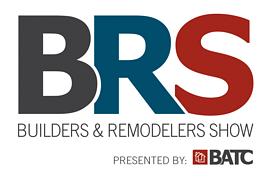
Construction is a large umbrella ranging from handyman projects to large, multi-funded developments. Some contractors are all tools and skill while others are masters of management and leverage. Fitting all of this under the single category of e-commerce is futile. To truly create a web presence, you need to know your marketing voice and develop your site around the things that drive your audience.
Expert Driven Design
Some people are selling themselves as experts in their industry. For this central marketing message, a blog may be the best. Blogs tend to be written in first or second person, using “me” and “you,” which automatically develops a bond between the writer and the audience. They are usually descriptive, telling the reader how and why something should be done. Take a look at the Amway blog as a good example of a business blog concentrating on industry expertise. Inc Magazine has some good tips for creating content for a great business blog as well.
The Supply Chain Site
 In manufacturing, the supply chain is extremely important. The supply chain is the total process from inception to customer care, including suppliers, marketers and the title company that assists in closing. In construction, this is project management and some e-commerce sites use its unique issues as the driving message. An e-commerce supply chain site will be broken down into specific topics of project management. One section may have a supplier and a shopping cart for these items. Another section would have human resource information and your services listed. The idea is that the website will guide a user through the entire breadth of project development.
In manufacturing, the supply chain is extremely important. The supply chain is the total process from inception to customer care, including suppliers, marketers and the title company that assists in closing. In construction, this is project management and some e-commerce sites use its unique issues as the driving message. An e-commerce supply chain site will be broken down into specific topics of project management. One section may have a supplier and a shopping cart for these items. Another section would have human resource information and your services listed. The idea is that the website will guide a user through the entire breadth of project development.
Product as the Traditional E-Commerce Website
When most people think of e-commerce, they think of Amazon with its departments and lists of item after item. If you are selling products, the traditional e-commerce rules apply. Your site needs to have an easily identifiable navigation bar and solid search functions. The images need to be clear and sharp, being part of a good preview system. Your descriptions should be both poetic and specific, enumerating the product specs in bulleted form. As part of a larger marketing plan, the site and every individual item needs to be easily shareable on social media.
Social Motivated Websites
Where some contractors are focused on their expertise, others are social and friendly, providing a marketing message centered on trust. In the construction industry, this is huge. A trusted contractor is worth his weight in gold. Like the expert site, the social site is content driven but here it is a dialogue instead of a monologue. It should revolve around active social media feeds that allow for a conversation format. A question and answer section will keep people on your site longer and keep them coming back, both being keys to successful e-commerce sales.
The Mix
The gut reaction is to try and do everything, but the reality is that you do not have experience in every facet of the construction industry. Your specialization should be reflected on your website. As your e-commerce site is developed, some things will be added while others will be discarded. A shopping cart is only useful for selling products but generally not for services. Just make certain the website can be shared on social media since it is a good source of marketing.


 On April 2nd, 2015 I presented a half day marketing workshop titled "Choosing and Targeting the Right Customers and Projects Types for Your Business". The workshop was billed as the keynote session for the
On April 2nd, 2015 I presented a half day marketing workshop titled "Choosing and Targeting the Right Customers and Projects Types for Your Business". The workshop was billed as the keynote session for the  Take advantage of the timing
Take advantage of the timing  Stop taking just any customers and jobs. Be selective about who you will let become your customers. For example why not only work with people who would say they are "working with" you, not those who would say you are "working for them". Also, be selective about the project types you go after. For example why not attract people who want high quality products. If you sell using one markup across all cost categories the gross profit dollars earned on material intensive projects due to higher price point products is an easier way to meet overhead and net profit goals, both now and in the future, particularly when compared to selling and producing labor intensive projects.
Stop taking just any customers and jobs. Be selective about who you will let become your customers. For example why not only work with people who would say they are "working with" you, not those who would say you are "working for them". Also, be selective about the project types you go after. For example why not attract people who want high quality products. If you sell using one markup across all cost categories the gross profit dollars earned on material intensive projects due to higher price point products is an easier way to meet overhead and net profit goals, both now and in the future, particularly when compared to selling and producing labor intensive projects. The old traditional marketing methods of trying to find prospects who want your services now and interrupting them to get their attention no longer work. Today consumers are the ones deciding how they will find and qualify their project ideas as well as the contractor they will work with. Instead use inbound marketing tactics that help consumers find your business. This should be one of the two primary purposes of your marketing and can be accomplished on your web site using SEO tactics and good content on your site’s pages as well as your blog. The other primary purpose of your marketing, particularly at your web site, should be to help prospects decide if what you offer and how you do business are right for them. In other words your marketing should help them prequalify themselves so they either want to contact you or know they shouldn't.
The old traditional marketing methods of trying to find prospects who want your services now and interrupting them to get their attention no longer work. Today consumers are the ones deciding how they will find and qualify their project ideas as well as the contractor they will work with. Instead use inbound marketing tactics that help consumers find your business. This should be one of the two primary purposes of your marketing and can be accomplished on your web site using SEO tactics and good content on your site’s pages as well as your blog. The other primary purpose of your marketing, particularly at your web site, should be to help prospects decide if what you offer and how you do business are right for them. In other words your marketing should help them prequalify themselves so they either want to contact you or know they shouldn't.
 I constantly read forum posts about contractors’ being shocked to discover they are being re-directed away from their own company when searching for their own company online, and then are directed to a lead generation service. The issue is rampant – but unfortunately, the situation is typically inadvertently created by the contractors’ themselves.
I constantly read forum posts about contractors’ being shocked to discover they are being re-directed away from their own company when searching for their own company online, and then are directed to a lead generation service. The issue is rampant – but unfortunately, the situation is typically inadvertently created by the contractors’ themselves. We read the Terms & Conditions of numerous Lead Generation companies. It is important to note that every lead generation company views anything you submit to their site for content as their own. That includes your business biography, services, testimonials and pictures. The terms sometimes have a permutation of wording that states "the contractor agrees that a consumer MAY NOT be directed back to the contractor if the contractor does not have the appropriate spending limit and other limitations".
We read the Terms & Conditions of numerous Lead Generation companies. It is important to note that every lead generation company views anything you submit to their site for content as their own. That includes your business biography, services, testimonials and pictures. The terms sometimes have a permutation of wording that states "the contractor agrees that a consumer MAY NOT be directed back to the contractor if the contractor does not have the appropriate spending limit and other limitations".  The contractor is asked to sign up, pass along his/her identity to the lead generation company, and the lead generation company can use the information anyway it wants if you do not pay them forever.
The contractor is asked to sign up, pass along his/her identity to the lead generation company, and the lead generation company can use the information anyway it wants if you do not pay them forever.  So in summary, there are only two ways to win at getting more online lead opportunities:
So in summary, there are only two ways to win at getting more online lead opportunities:

 Once a potential customer knows they have a need they’ll begin researching options for what they can or should do to fill that need. During this stage of their buying cycle you’ll want to provide them with white papers, checklists, and or e-books. The strategy should be to provide more in-depth content that describes the problem(s) they have and outlines step by step solutions—which your company just happens to be able to help them with. This is also the lead generation stage. By keeping track of who downloads information from your site you can separate the consumers who are genuinely interested in what you offer and how you can help them from others who are just casually browsing your site.
Once a potential customer knows they have a need they’ll begin researching options for what they can or should do to fill that need. During this stage of their buying cycle you’ll want to provide them with white papers, checklists, and or e-books. The strategy should be to provide more in-depth content that describes the problem(s) they have and outlines step by step solutions—which your company just happens to be able to help them with. This is also the lead generation stage. By keeping track of who downloads information from your site you can separate the consumers who are genuinely interested in what you offer and how you can help them from others who are just casually browsing your site. 

 One might be that they realize your business is not right for them.
One might be that they realize your business is not right for them.
 Never assume what they should do or tell them what to do.
Never assume what they should do or tell them what to do.

 By suggesting these simple changes and others to the remodelers I work with, I have helped them maximize their ROI for the dollars they spend on their web sites. Using the right strategies they attract not just leads, but targeted qualified leads for the kinds of customers and projects they want to get.
By suggesting these simple changes and others to the remodelers I work with, I have helped them maximize their ROI for the dollars they spend on their web sites. Using the right strategies they attract not just leads, but targeted qualified leads for the kinds of customers and projects they want to get.
 Then identify the functionality you will need behind the scenes. For example things like the Content Management System (CMS) you will use to add and edit pages, smart call to action buttons so you know what pages visitors clicked through from, landing pages, a blogging tool, automated lead nurturing ability, analytics and an email marketing tool. You will need to consider these kinds of things to get a price from a web designer for the work to be done and the CMS you will use.
Then identify the functionality you will need behind the scenes. For example things like the Content Management System (CMS) you will use to add and edit pages, smart call to action buttons so you know what pages visitors clicked through from, landing pages, a blogging tool, automated lead nurturing ability, analytics and an email marketing tool. You will need to consider these kinds of things to get a price from a web designer for the work to be done and the CMS you will use. Now you have a web site!
Now you have a web site!

 What is their background and/or length of time at their trade?
What is their background and/or length of time at their trade? What town do they live in? Grow up in?
What town do they live in? Grow up in? It’s important to have everyone around be relaxed; if it doesn’t flow easily after a couple of tries, take a break and return to the filming later. For the interviews, have each person sitting while looking at someone they’re friendly with, located just off to one side of the camera. Interviewees should remain looking at the other person continuously and avoid quick looks at the camera (or look only at the camera). If a person's eyes shift back and forth, they literally look shifty!
It’s important to have everyone around be relaxed; if it doesn’t flow easily after a couple of tries, take a break and return to the filming later. For the interviews, have each person sitting while looking at someone they’re friendly with, located just off to one side of the camera. Interviewees should remain looking at the other person continuously and avoid quick looks at the camera (or look only at the camera). If a person's eyes shift back and forth, they literally look shifty! Surprisingly, the mantra in the film and video world is “Sound is half the picture.” Poor sound is a hallmark of schlocky work, dragging down many otherwise promising videos. If someone insists they don’t need an external microphone to record speech, don’t even consider working with them! Also, watch out for and eliminate distracting sounds in the background. Radios OFF! And don't seat someone close to an inside corner, because there will be very slight but irritating echoes.
Surprisingly, the mantra in the film and video world is “Sound is half the picture.” Poor sound is a hallmark of schlocky work, dragging down many otherwise promising videos. If someone insists they don’t need an external microphone to record speech, don’t even consider working with them! Also, watch out for and eliminate distracting sounds in the background. Radios OFF! And don't seat someone close to an inside corner, because there will be very slight but irritating echoes. The trend of including video on websites is advancing rapidly, but remodeling company websites have been slow to catch on. This is an opportunity to get ahead of the competition. Dr. Tom Leighton, from MIT and Akamai Technologies, has predicted HD video will be 75% of all Internet traffic by 2014.
The trend of including video on websites is advancing rapidly, but remodeling company websites have been slow to catch on. This is an opportunity to get ahead of the competition. Dr. Tom Leighton, from MIT and Akamai Technologies, has predicted HD video will be 75% of all Internet traffic by 2014. Present the (hopefully) polished staff who will be working in clients’ homes and as well as those interacting from the office. Also consider including key trades people if you work with them regularly. By using videos you’ll be going beyond what a write up can do with these introductions. The talks will pro-actively address any uneasiness homeowners may have about what kind of people will be in their homes. Ideally I suggest keeping each one to under a minute.
Present the (hopefully) polished staff who will be working in clients’ homes and as well as those interacting from the office. Also consider including key trades people if you work with them regularly. By using videos you’ll be going beyond what a write up can do with these introductions. The talks will pro-actively address any uneasiness homeowners may have about what kind of people will be in their homes. Ideally I suggest keeping each one to under a minute.  Testimonials:
Testimonials: 
 Last month Shawn posted a blog warning contractors of the price shopper titled
Last month Shawn posted a blog warning contractors of the price shopper titled  Unfortunately, I agree with Shawn when he stated that many contractors are terrible salespeople, so they have to sell on price. If that’s you, then you really need to ask yourself if you’ve actually invited the “haggler” to contact you. If your brochure, ad, website or any other selling tool you use promises “Best Prices”, “Affordable Service” or “Small Cost for High Quality”, as Jeff Foxworthy would say…"there’s your sign”.
Unfortunately, I agree with Shawn when he stated that many contractors are terrible salespeople, so they have to sell on price. If that’s you, then you really need to ask yourself if you’ve actually invited the “haggler” to contact you. If your brochure, ad, website or any other selling tool you use promises “Best Prices”, “Affordable Service” or “Small Cost for High Quality”, as Jeff Foxworthy would say…"there’s your sign”. Most people do a bit of research before calling for bids. Make sure your website clearly explains your business philosophy, process, product choices and anything else that will help steer folks away from price shopping. Include lots of pictures. Before / After shots are great…and if they include the homeowners in the “after shot” better yet! Real people, real project, real happy!
Most people do a bit of research before calling for bids. Make sure your website clearly explains your business philosophy, process, product choices and anything else that will help steer folks away from price shopping. Include lots of pictures. Before / After shots are great…and if they include the homeowners in the “after shot” better yet! Real people, real project, real happy!  Have you earned awards or accolades from pertinent associations? Non-customers and peers giving you kudos speak volumes to a potential customer. Are you a Certified Installer for a particular product? My company offers perks and real benefits for becoming a certified installer of our products…and it has proven to make a big difference in our Certified WOLF Pro’s sales process.
Have you earned awards or accolades from pertinent associations? Non-customers and peers giving you kudos speak volumes to a potential customer. Are you a Certified Installer for a particular product? My company offers perks and real benefits for becoming a certified installer of our products…and it has proven to make a big difference in our Certified WOLF Pro’s sales process. 





